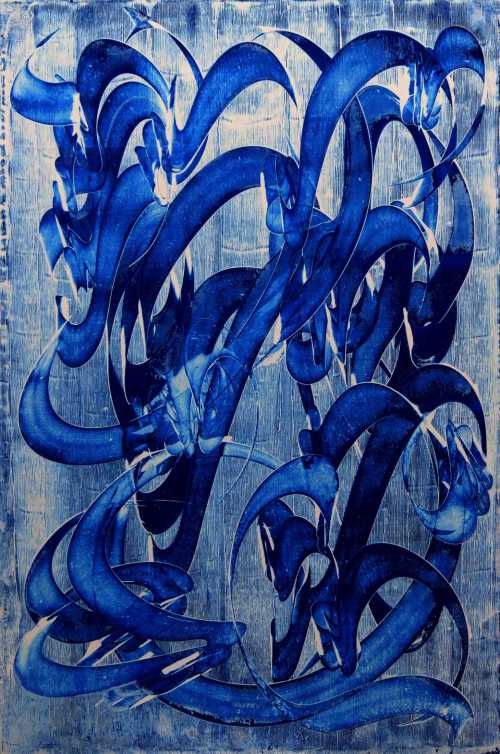Bahram Hanafi
Iran | 1966About Bahram Hanafi
Bahram Hanafi, calligrapher, researcher, and manuscript expert, was born in Miandoab. He is one of the late artists of calligraphic painting. Hanafi started professional calligraphy from the Iran Calligraphers Association and received training in calligraphy until 1992. At the same time, he entered the University of Arts and continued his art studies in handicrafts. He started his work as a manuscript expert in Golestan Palace in 1995. He continued his postgraduate studies in art research at Tarbiat Modares University and graduated in 1997. His first solo exhibition, titled "Kahl Basr," was held at the same time as the end of his undergraduate course at the University of Arts. In 1994, he exhibited his works individually in Seyhoun Gallery. Years later, his solo exhibition titled "Rumi Poems" was held in the Los Angeles branch of this gallery. In 2019, his works were exhibited at the Affordable Art Fair by Capital Art London.
Although Hanafi came from a classical background, such as Calligraphers Association, in his first exhibition (Kahl Basr), he revealed his tendencies toward new calligraphic methods. He continued his path with cursive writings in freestyle siyahmashq, written with fast and throwing pens, and displayed the results in 2005 at the "Beshno az Ney" exhibition. The personal coordinates of Hanafi's works are the result of his efforts during this period: the emphasis on the movements of the entire pen and the powerful and dynamic compositions that emerge from the heart of compressed writing, and the central role of improvisation in his calligraphy are among these features. His perspective on traditional calligraphy methods was the turning point in 2009 with the exhibition "Azarnavisheha." Keeping his achievements in the Thuluth script, he moved towards spontaneity, mobility, and liberation, leaving behind the limits of traditional calligraphy. In the collection "Cheleh neshini," exhibited in 2010, he used calligraphy in the context of painting and established himself as a calligraphic painter artist. Hanafi expanded this movement in his later collections, such as Asma (2010), "Mashq-e-Leili" (2011), and "Khayyam" (2012). He used different shades of blue in most of his works of this period.
The Most Expensive Artwork
At Auctions
First Attendance
8 April 2014
# Attendance
7
# Artworks
9
Average Realized Price
7,185 USD
Average Min Estimate
3,396 USD
Average Max Estimate
4,870 USD
Sell-through Rate
50%
Average Growth of Artwork Worth
76.899%
Timeline
Naqsh-e Jahan / Modern & Contemporary Art from Persia auction
25 February
Resize exhibition
16 August
+-50 exhibition
15 March
10s of Artworks, 10s of Millions exhibition
8 March
Tehran- 16th- Iranian contemporary art auction
1 July
Nowruz Festival of Rivers exhibition
10 March
The last event 1400 exhibition
25 February
MODERN & CONTEMPORARY ART auction
27 November
The Blue Series exhibition
11 May
The 6th Tehran- Contemporary Iranian Art auction
23 December
Islamic and Indian Art auction
8 April
